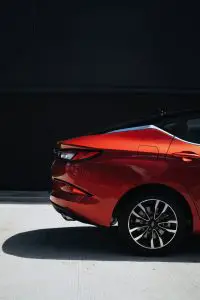As we’re building a strategy for our fashion brand, one of the key decisions we’re required to make relates to how to distribute our collections.
Distribution is essential in fashion, as the supply of our products will be very influential on the prices customers will pay to acquire them.
It’s important to remember that when we’re selling a fashion product, we’re never ever selling ‘just the product’ but so much more. Customers buy fashion because of the exclusivity of the look, for its scarcity and high demand. Therefore, it’s necessary to make sure that our distribution approach is matched with the value customers are expecting to get out of their purchase.
Let’s now look into the three main types of distribution strategies and discuss the benefits and limitations connected to each.
Intensive Distribution
In intensive distribution, brands will sell their products everywhere: from the small retail shop to the huge mall. The focus of intensive distribution is to make the product available anywhere it can possibly be sold. Intensive distribution is the strategy adopted by fast-moving consumer goods and can be found in fashion too.
Brands that pursue this approach are usually mass-market vertical retailers that sell high-volume, high-margin products.
This approach can be expanded to include digital distribution. As products can be bought online at any point in time and in any space where an internet connection is available, the exclusivity of the product is compromised. Moreover, given that intensive distribution works mostly with cheaper, everyday products, fashion companies often struggled in selling luxurious products online as the internet is often considered a space connected to lower prices and discounted sales.
In order to manage the challenges of a luxury brand to manage multiple distribution strategies over multiple markets, Giorgio Armani is an example of a luxury brand that was able to develop strong differentiation by using the business model portfolio. If you’d like to read more about this, here’s a link to our case study.
Most companies, however, in consideration of the higher value of their collections, pursue more restrictive distribution approaches, like in the case of a selective distribution which we’re going to discuss next.
Selective Distribution
In the case of selective distribution, a producer or manufacturer chooses to distribute its products through a limited number of touchpoints, with the goal of covering a broad geographical area. The benefit of this approach lies in the power the brand has to pick and choose the specific outlets and stores that provide better sales performance and the right retail image.
Selective distribution is an expression of a different approach to the market. This approach is more typical of mid-market brands which usually belong to bridge or diffusion markets. In this case, the focus the brand pursues is not retail efficiency but building a strong brand experience.
If one the one end, selective distribution is tailored to serve a reasonably large geographical area, on the other hand, the brand is committed to preserving the right retail experience.
The touchpoint between a brand and the customer provides the opportunity to make a very meaningful and memorable connection, and because of that, the customer may be willing to pay an extra price to experience the intangible benefits of being a potential customer.
The challenge that selective distribution entails is connected to presenting the brand together with other brands and other products which may compete with it and distract your customer, thereby not delivering a completely unique brand experience.
In order to provide a fully immersive brand experience a full retail commitment is necessary, the one that is associated with exclusive distribution.
Exclusive Distribution
In the case of exclusive distribution, the manufacturer or producer decides to distribute its products only through one specific distributor, or in some cases only through vertically integrated stores.
This approach is the one mostly pursued by those brands that compete in the luxury segments of haute couture and ready-to-wear.
The purpose of exclusive distribution is to make sure your customers associate a sense of scarcity and exclusivity to the product, regardless of the fact that in many cases exclusive distribution is focused on developing artificial scarcity.
The benefits of exclusive distribution are connected to tapping into the opportunities of luxury markups which can 10x your revenue due to the timeless and heritage value the brand can acquire by being “above the noise” of more commercial brands.
Having said all of this, what is the most effective approach for your fashion brand? Let’s look into a few conclusive remarks in our next paragraph.
Conclusions: How to Choose Your Distribution Strategy
So what approach is the best one for you? The decision depends on two main factors: who your customer are and what kind of relationship you want to build with them.
There are quite a few factors to consider in order to make the right decision:
Who is your customer?
The first step is identifying your target customer and his\her need. In many cases, marketers focus on developing the identikit of their most profitable client, but it can also be very helpful to focus on understanding the job that the customer is looking to get done. What kind of need does he have? Is it functional? Social? Emotional? Understanding their problems will help you develop better solutions. If you’d like to read more into this, here’s an article that can help you: What is Jobs to Be Done and Why it Matters for Your Business.
What kind of relationship do you want to build with them?
This is a more complex question that builds upon the previous one. In this case, you need to consider what kinds of rituals, routines, habits you think are able to connect the customer to the brand. If you’re able to identify the experiential dimension of your brand, then you’ll be better able to understand in what ways you can interact with your customers.
That’s it. We hope this post helps in understanding distribution and identifying the right research strategy to develop your own approach. If you’d like to explore this topic further don’t hesitate to visit our blog, where you’ll be able to find a lot of material on experiential retail and international distribution.







